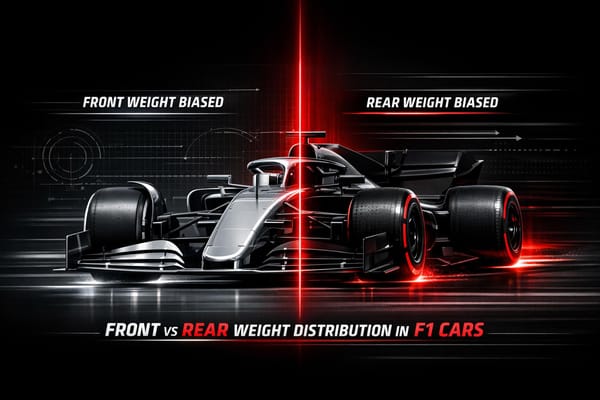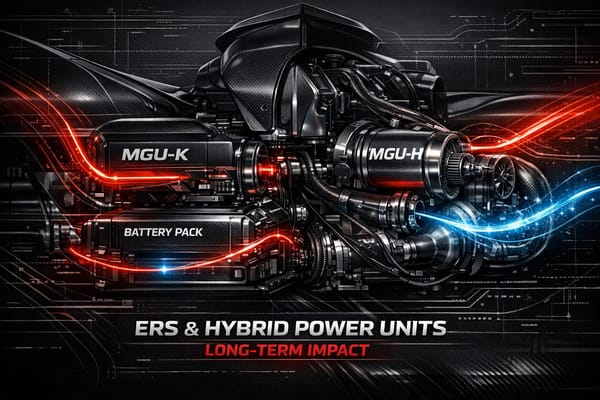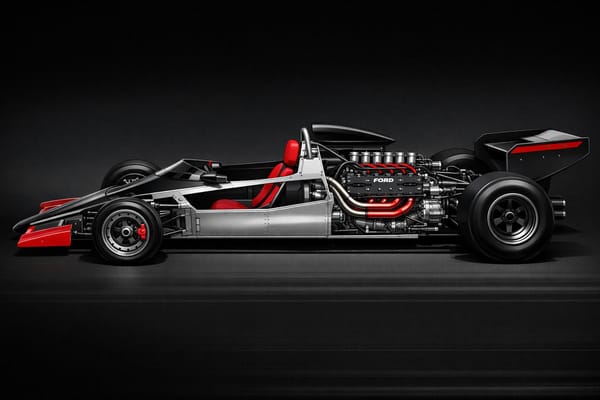Desert Precision: The 2025 Qatar Grand Prix and Its Title Implications
The 2025 Qatar Grand Prix reshaped the championship landscape, showcasing team strategies amid extreme conditions, with one team emerging as a clear frontrunner.
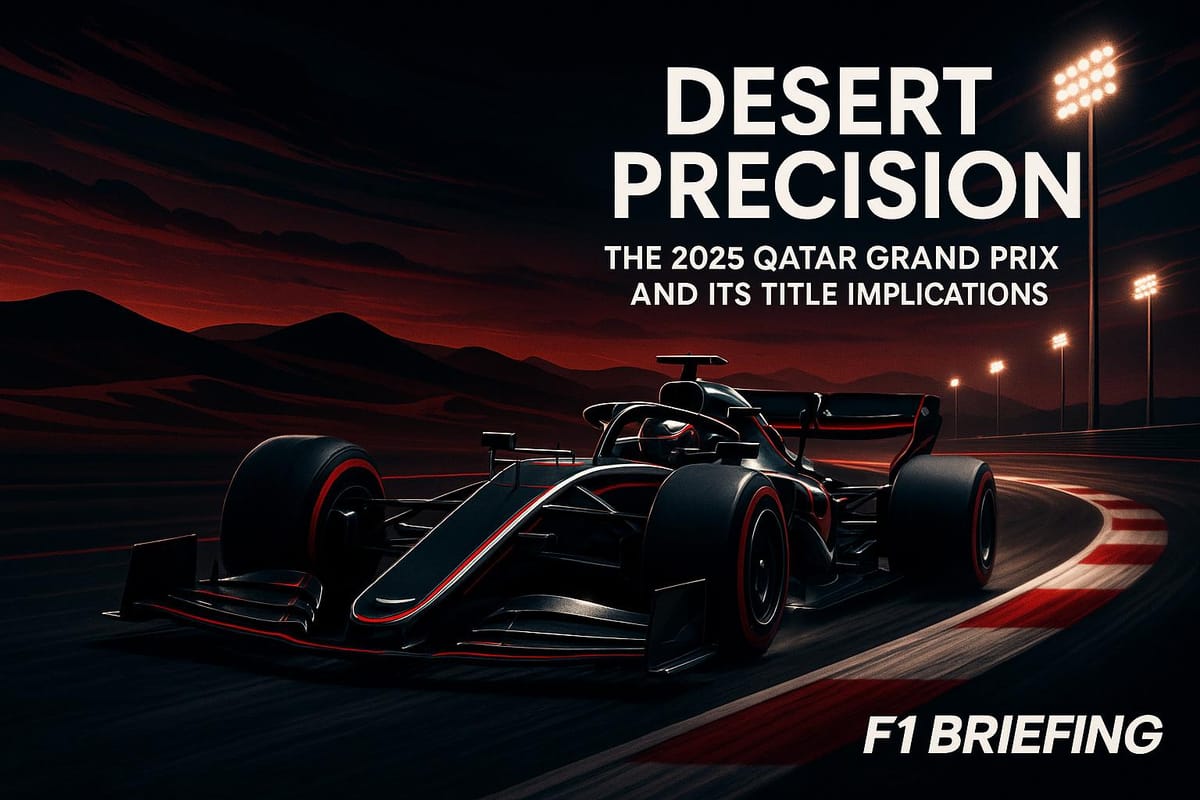
The 2025 Qatar Grand Prix was a turning point in the Formula 1 championship race. McLaren dominated with their drivers, Oscar Piastri and Lando Norris, holding the top two spots in the standings. Meanwhile, Red Bull and Mercedes struggled to keep pace under the extreme desert conditions of the Lusail International Circuit. Here's what you need to know:
- McLaren's dominance: After seven 1-2 finishes this season, Piastri leads with 284 points, followed by Norris at 275. Their aggressive tire strategies and tailored setups gave them an edge despite the physical toll on drivers.
- Red Bull's challenges: Max Verstappen, third in the standings with 187 points, faced setbacks due to inconsistent car performance and struggles with tire management.
- Mercedes' steady approach: Focused on reliability, Mercedes prioritized tire preservation and consistent scoring, keeping them in contention for second in the Constructors' Championship.
Championship outlook: McLaren leads the Constructors' Championship with 559 points, far ahead of Ferrari (260 points). The battle for second remains tight, with Ferrari, Mercedes, and Red Bull all vying for position. With only a few races left, every decision will shape the final standings.
The Qatar Grand Prix showcased how extreme conditions test teams' strategies, technical setups, and driver endurance. As the season nears its conclusion, McLaren's internal rivalry and the fight for second place among other teams add layers of drama to the championship race.
The Preview of the 2025 Qatar GP
1. McLaren

McLaren arrived in Qatar riding high after a dominant performance at the Hungarian Grand Prix on August 3, 2025. With Oscar Piastri leading the Drivers' Championship with 266 points and Lando Norris close behind at 250 points, the team faced a delicate balancing act: pushing their race strategy to the max while managing the competitive tension between their two standout drivers.
Driver Performance
In Hungary, McLaren celebrated their seventh 1-2 finish of the season, with Norris claiming his fifth victory. His success came from an effective one-stop strategy, while Piastri played a longer game with a two-stop approach, ensuring he retained his championship lead. Norris, reflecting on the grueling nature of the race, shared:
"I'm dead. We hadn't planned a one-stop until after lap one, and the final stint as Oscar closed in tested every limit. Exhausting, yet the reward made it all the more meaningful."
Piastri, on the other hand, showcased his consistency and strategic adaptability, highlighting the team's ability to tailor approaches for each driver. This dynamic between the two not only underscored their individual strengths but also provided valuable insights for refining strategies moving forward.
Tire Strategy
Building on their success in Hungary, McLaren fine-tuned their tire management approach for Qatar. The lessons learned from the Hungarian track - particularly in balancing performance and durability - proved essential in navigating Qatar's challenging desert conditions, where tire wear plays a critical role.
Technical Setups
To handle Qatar’s unique demands, McLaren made targeted adjustments to their technical setups. With sand and heat affecting grip levels, the team focused on improving their aerodynamic package and fine-tuning suspension settings. These changes ensured both drivers could maximize their performance, even under the harsh conditions of the desert circuit.
2. Red Bull Racing
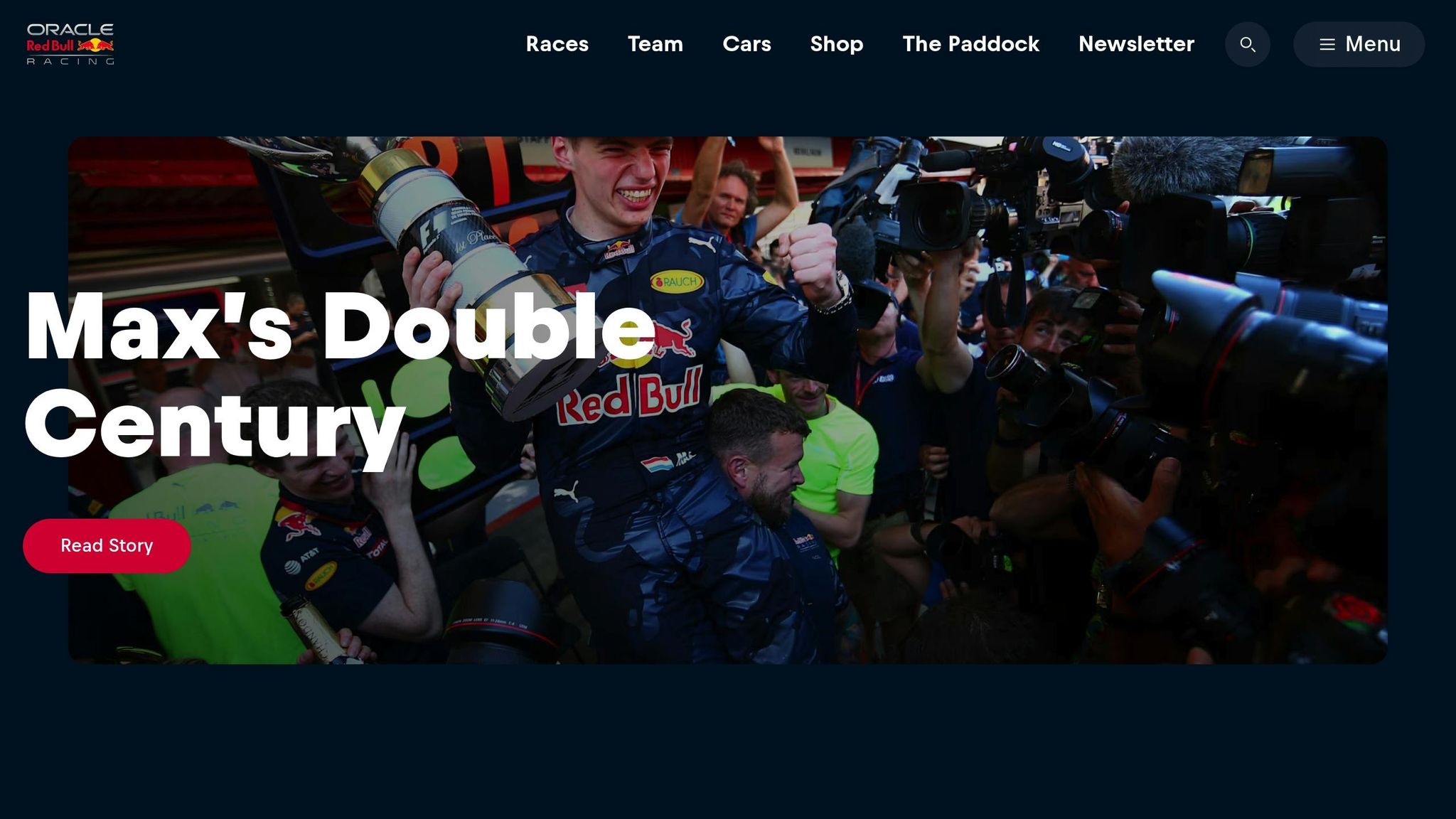
Red Bull Racing arrived in Qatar with 162 points, trailing McLaren (374 points) and Mercedes (199 points) in the Constructors' Championship. This gap reflects the uphill battle the team has faced throughout the season. On the Drivers' side, Max Verstappen was third in the standings with 187 points, a notable 97 points behind the leader, Oscar Piastri.
Driver Performance
Max Verstappen, a three-time world champion, found himself in unfamiliar territory this season. With 187 points, he was 97 points adrift of Piastri, the championship leader. While Verstappen’s talent remains unquestionable, the deficit highlights the challenges Red Bull has faced in keeping up with McLaren's and Mercedes's pace.
The sprint weekend format added another layer of difficulty. Unlike previous seasons where Red Bull's superior race pace could often compensate for qualifying struggles, this year has been different. The team has had to fight tooth and nail for every position, especially against McLaren’s consistent 1-2 finishes and Mercedes’s improvements. To make matters worse, inconsistencies between Red Bull’s two cars have further hindered their ability to close the gap. These struggles led to immediate technical adjustments as the team worked to address their performance issues.
Technical Setups
The unique challenges of Qatar exposed some of the vulnerabilities in Red Bull’s 2025 car under the current regulations. The desert heat and the abrasive surface of the Lusail International Circuit demanded tailored solutions in cooling and aerodynamics, areas where the team struggled to find the right balance.
Engineers worked to fine-tune brake cooling systems, manage engine temperatures, and adjust suspension setups to handle the circuit’s high-speed corners while also managing tire wear on the rough track surface. These adjustments, however, came at a cost. Aerodynamic efficiency was compromised, underscoring the delicate trade-off between reliability and outright performance. Compared to McLaren’s polished setup and Mercedes’s resurgence, Red Bull’s package seemed less adaptable to the extreme conditions. While technical tweaks helped address some issues, tire strategy remained a glaring weak spot.
Tire Strategy
The sprint weekend format forced Red Bull into a reactive approach when it came to tire management. With limited practice sessions and the demands of sprint qualifying, the team had to strike a tricky balance between preserving tires and maintaining competitive pace.
The high tire degradation at Lusail, combined with the desert temperatures, made every decision critical. Red Bull’s strategy team faced tough calls on tire compound choices across multiple sessions. Despite their typically strong pit stops, the team couldn’t overcome the fundamental pace disadvantage compared to McLaren. Attempts to gain an edge through undercuts and extended stints provided brief advantages in track position but ultimately fell short. This season-long struggle with tire management has been a defining challenge in their 2025 campaign.
3. Mercedes
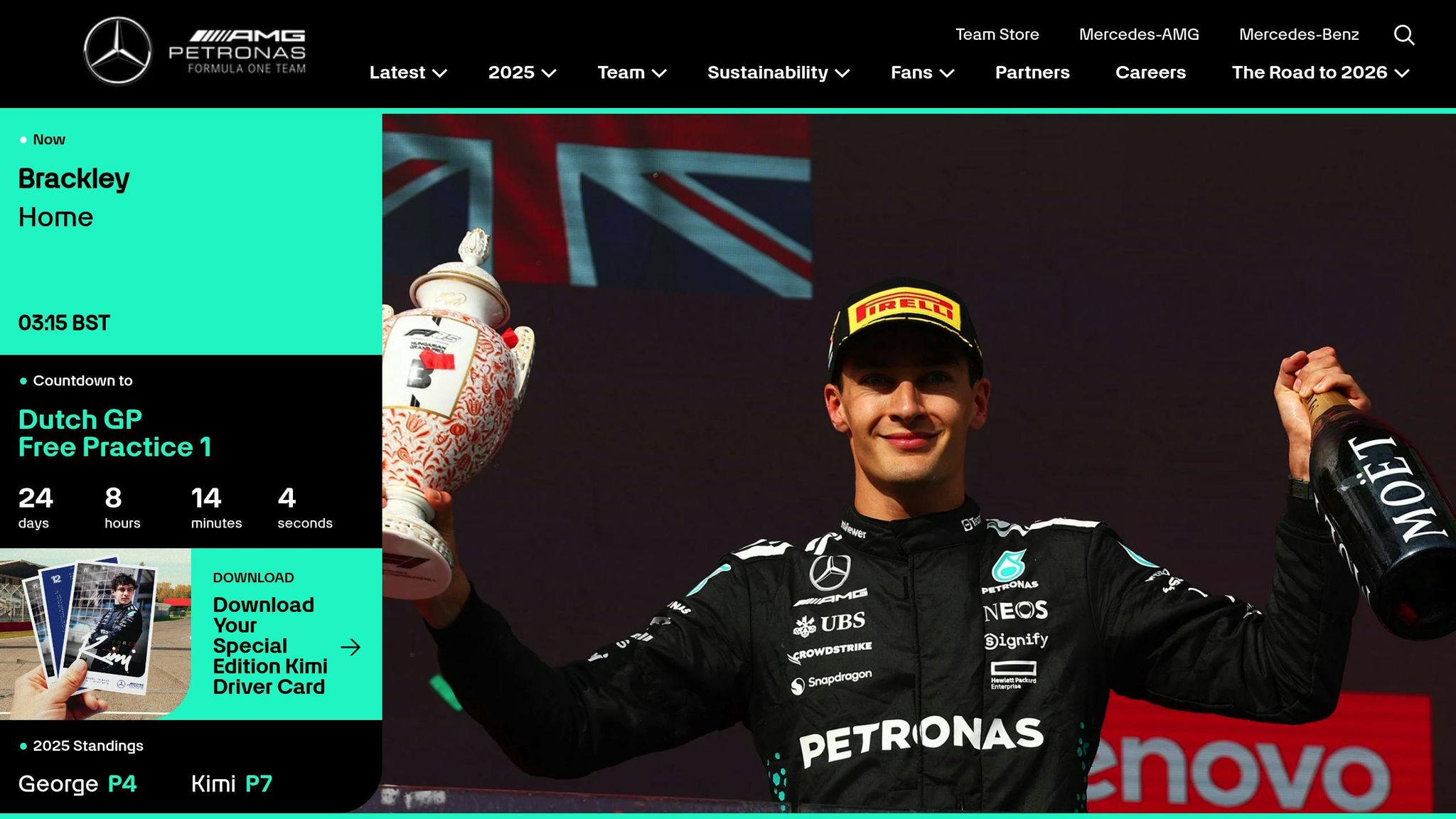
Mercedes arrived in Qatar holding second place in the Constructors' Championship, determined to solidify their position and close the gap to the frontrunners.
Driver Performance
Throughout the season, Mercedes has been a model of consistency, with both drivers reliably scoring points - a trait that proved invaluable under Qatar's demanding conditions. Their approach to the sprint weekend was calculated and focused, prioritizing damage control and capitalizing on opportunities as they arose. The drivers displayed steady composure, demonstrating that consistent teamwork can often outshine individual heroics.
The 3.37-mile, 16-turn Losail circuit presented unique challenges, including a critical right-hand corner reminiscent of Istanbul Park’s Turn 8. Navigating this required precision and strategic finesse. Mercedes excelled in balancing competitive lap times with tire preservation, a key factor in their performance over the weekend. This balance reflected their ability to adapt and innovate under pressure.
Technical Setups
Mercedes brought a finely tuned technical package to Qatar, designed to handle the extreme desert conditions. Drawing on insights from previous races in similar environments, the team introduced improved cooling solutions to manage brake and engine temperatures effectively. The suspension setup was carefully adjusted to maintain grip on a track that had undergone recent modifications.
Additionally, with 25 mph gusts threatening to disrupt aerodynamic balance, Mercedes made precise adjustments to their setup to minimize the effects of wind during both qualifying and the race. These refinements allowed the car to remain competitive on the circuit’s high-speed straights while maintaining stability through its more technical sections.
Tire Strategy
Mercedes’ tire strategy in Qatar showcased their ability to think ahead and adapt to the desert’s unique challenges. Pirelli provided their hardest compound selection for the weekend - C1 (hard), C2 (medium), and C3 (soft) - forcing teams to make critical decisions about tire management.
Having learned from previous incidents in Qatar, where overextending tire life led to failures, Mercedes opted for a conservative approach. Their strategy emphasized tire preservation over aggressive stint lengths, which proved effective on the abrasive track surface compounded by desert sand.
The team started on medium compounds before switching to hard tires, aligning with Pirelli’s recommendation for a single-stop strategy. Precise pit stop timing and adjustments for temperature variations between sessions highlighted Mercedes’ ability to adapt to the ever-changing conditions in Qatar’s desert environment.
Strategy Comparison: Strengths and Weaknesses
Focusing on the unique challenges presented by Qatar's extreme conditions, the 2025 Qatar Grand Prix highlighted how each team's strategy shaped their race outcomes. With desert heat pushing drivers and cars to their limits, the event became a showcase for contrasting approaches, revealing both advantages and vulnerabilities in each team's game plan.
McLaren's aggressive strategy centered on bold pit stop timing and tire compound decisions aimed at gaining track position. Their decision to extend stints on medium compounds proved effective during early undercut opportunities. However, this aggressive approach came with risks in the scorching environment, where cockpit temperatures soared to around 122°F (50°C). Lando Norris summed up the physical toll after the race:
"Today we probably found the limit. We had to find it that way with some people ending up in the medical centre or passing out. A pretty dangerous thing."
Red Bull Racing leaned on technical precision, tailoring their car setup to Qatar's specific demands. Their engineers focused on fine-tuning brake pressure and optimizing the differential to maximize performance with Pirelli's hardest tire compounds - C1 (hard), C2 (medium), and C3 (soft). This attention to detail allowed them to maintain a competitive edge in car balance and braking performance.
Mercedes took a more conservative route, prioritizing reliability and tire preservation over aggressive moves. With track temperatures staying above 96.8°F (36°C), their strategy emphasized consistency. Georgios Chimonides, a power unit engineer for Mercedes, explained their mindset:
"The goal we have with the Power Unit is to always have optimum performance without any reliability issues. From a performance standpoint, what we are trying to achieve is maximum performance throughout the operating envelope so we can adapt to any different weather conditions."
| Team | Primary Strategy | Key Strength | Critical Weakness |
|---|---|---|---|
| McLaren | Aggressive undercut with extended medium stints | Gains in track position through bold pits | Driver fatigue in extreme conditions |
| Red Bull Racing | Technical setup optimization | Strong car balance and brake performance | Limited flexibility under pressure |
| Mercedes | Conservative tire management | Consistent reliability and point scoring | Missed opportunities for bold moves |
The middle stint of the race was particularly telling, as tire management emerged as the deciding factor. Mercedes' simulation engineer Oliver Albert highlighted the importance of tire performance:
"They are highly temperature-dependent. Not having the tyres in the correct working window for a given lap can be worth easily tenths of a second. Our job is primarily trying to get that tyre and put it in the right window."
McLaren's aggressive pit strategy cost them 20–25 seconds per stop but secured crucial track position. Red Bull's precise pit timing worked in harmony with their finely tuned setup, while Mercedes' cautious approach ensured they scored valuable championship points. The desert conditions added another layer of complexity, with sand blown onto the track by strong winds, impacting grip levels. Teams that adjusted suspension settings effectively managed to maintain steadier performance as conditions shifted.
Ultimately, the race highlighted how championship pressure shapes strategic decisions. Teams leading the standings could afford a more conservative approach, while those chasing points were forced to take calculated risks. From qualifying tire choices to race-day pit windows, these strategies not only defined the outcome in Qatar but will likely influence the championship battles to come.
Championship Impact and Future Outlook
The Qatar Grand Prix has reshaped the championship race, solidifying McLaren's dominance as the season nears its conclusion. With Oscar Piastri leading at 284 points and Lando Norris close behind at 275 points, McLaren's drivers occupy the top two spots in the standings. This sets the stage for a fascinating intra-team battle, while McLaren’s commanding position in the constructors' championship gives them the freedom to strategize without risking their overall lead.
In the constructors' standings, McLaren’s 559 points put them a staggering 299 points ahead of Ferrari, who hold second place with 260 points. This cushion allows McLaren to juggle their drivers' championship ambitions while maintaining their grip on the constructors' title. However, the fight for second place among teams is much tighter. Ferrari leads this contest with 260 points, followed by Mercedes with 236, and Red Bull Racing trailing at 194. For Red Bull, the Qatar Grand Prix sprint format - offering additional points - highlighted the uphill battle they face in closing the gap.
The season’s final stretch, including the Qatar Grand Prix scheduled for November 28–30, presents one of the last chances for major shifts in the standings. With only a few races remaining after Qatar, teams are increasingly forced to take calculated risks. Red Bull Racing’s Team Principal Laurent Mekies emphasized the steep challenge ahead:
"We will spend time reflecting during the break and we don't underestimate the work ahead of us, we have many, many talented people in the Team to overcome this and we want to come back with a different level of performance after the summer break."
Meanwhile, Mercedes is already looking beyond the immediate title fight, shifting their focus toward the 2026 regulations. Team Principal Toto Wolff explained:
"As our focus turns to 2026, we won't have any more major aerodynamic upgrades to bring to the track. Nevertheless, there are refinements we can make as we look to optimise the car we have. That will be useful as we look to end 2025 in a positive way and fight for second in the Constructors' Championship over these final 10 races of the year."
Upcoming sprint weekends in Austin, Brazil, and Qatar will be pivotal for teams chasing crucial points. Williams driver Alex Albon acknowledged the intensity of the competition:
"It's going to be a dogfight for the rest of the year and it's not going to be easy. I think we favour the lower downforce circuits and others probably favour the higher downforce ones, so we'll see how it plays out. But I'm going to fight like hell to keep P5 in the Championship for us and I'm sure Carlos feels the same. It's going to be a fight to the end."
McLaren’s streak of four consecutive 1–2 finishes underscores their dominance. This momentum, paired with their substantial points lead, makes them the clear frontrunners for both titles. However, the rivalry between Piastri and Norris adds a layer of complexity as the team navigates the final races.
Looking ahead, McLaren’s biggest challenge will be managing their drivers’ championship aspirations while continuing to maximize their points haul. With other teams struggling to adapt to varying circuit demands, McLaren’s ability to perform consistently - even under tough conditions like those in Qatar - will likely guide their approach in the decisive rounds.
FAQs
What made McLaren so dominant during the 2025 season, especially in tough races like the Qatar Grand Prix?
McLaren's commanding performance during the 2025 season, especially at the Qatar Grand Prix, was driven by a mix of technical advancements and meticulous strategy. Their state-of-the-art aerodynamic upgrades significantly boosted downforce and efficiency, giving them a clear edge in the scorching desert heat and on a track designed to encourage overtaking.
Combined with the dependability of the Mercedes-Benz power unit and skillfully managed tire strategies, McLaren showcased exceptional race pace and adaptability throughout the event. Their ability to consistently excel in tough conditions solidified their position as a dominant contender in the championship race.
What challenges did Red Bull face during the 2025 Qatar Grand Prix, and how did these impact their championship performance?
Red Bull's Struggles at the 2025 Qatar Grand Prix
The 2025 Qatar Grand Prix proved to be a tough challenge for Red Bull, thanks to the unforgiving desert conditions. With scorching temperatures and a highly abrasive track surface, tire durability became a major issue. Keeping consistent grip throughout the race was a struggle, and this highlighted some vulnerabilities in their aerodynamic setup, which didn’t quite meet the unique demands of the circuit.
On top of that, Red Bull’s strategy of prioritizing drivability over raw performance, which often works well on other tracks, fell short in Qatar. This approach seemed less suited to the specific challenges of the race, ultimately slowing their pace and affecting their position in the championship fight.
How is Mercedes managing their current championship push while preparing for the 2026 F1 regulations?
Mercedes is carefully juggling their efforts between excelling in the current Formula 1 season and gearing up for the 2026 regulation changes. They're channeling resources into developing a brand-new power unit tailored to meet the upcoming rules, which prioritize greater electric power and the use of sustainable fuels. At the same time, they're designing a chassis that's not only lighter but also more efficient, ensuring they remain a strong force under the new guidelines.
By drawing on their deep well of expertise and resources, Mercedes is striving to stay ahead of the competition without letting their current performance slip. This strategy showcases their dedication to pushing boundaries while holding their ground as one of Formula 1's leading teams.

